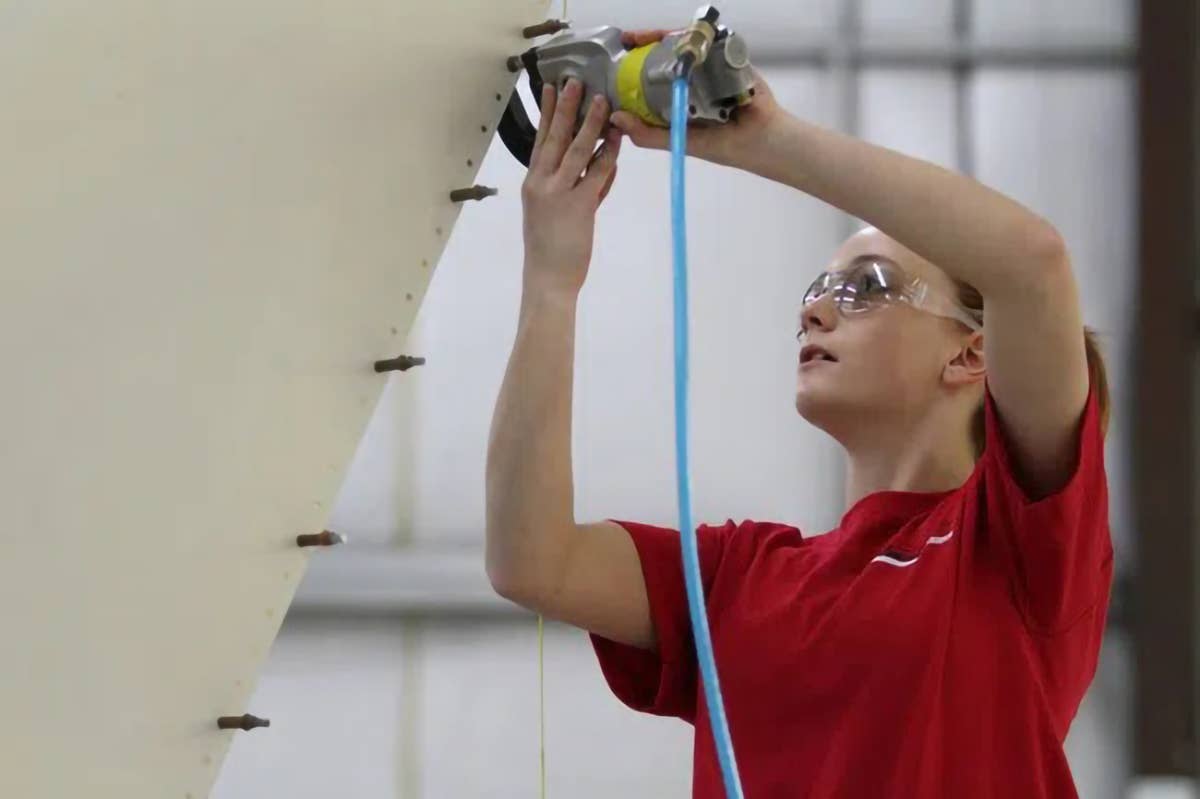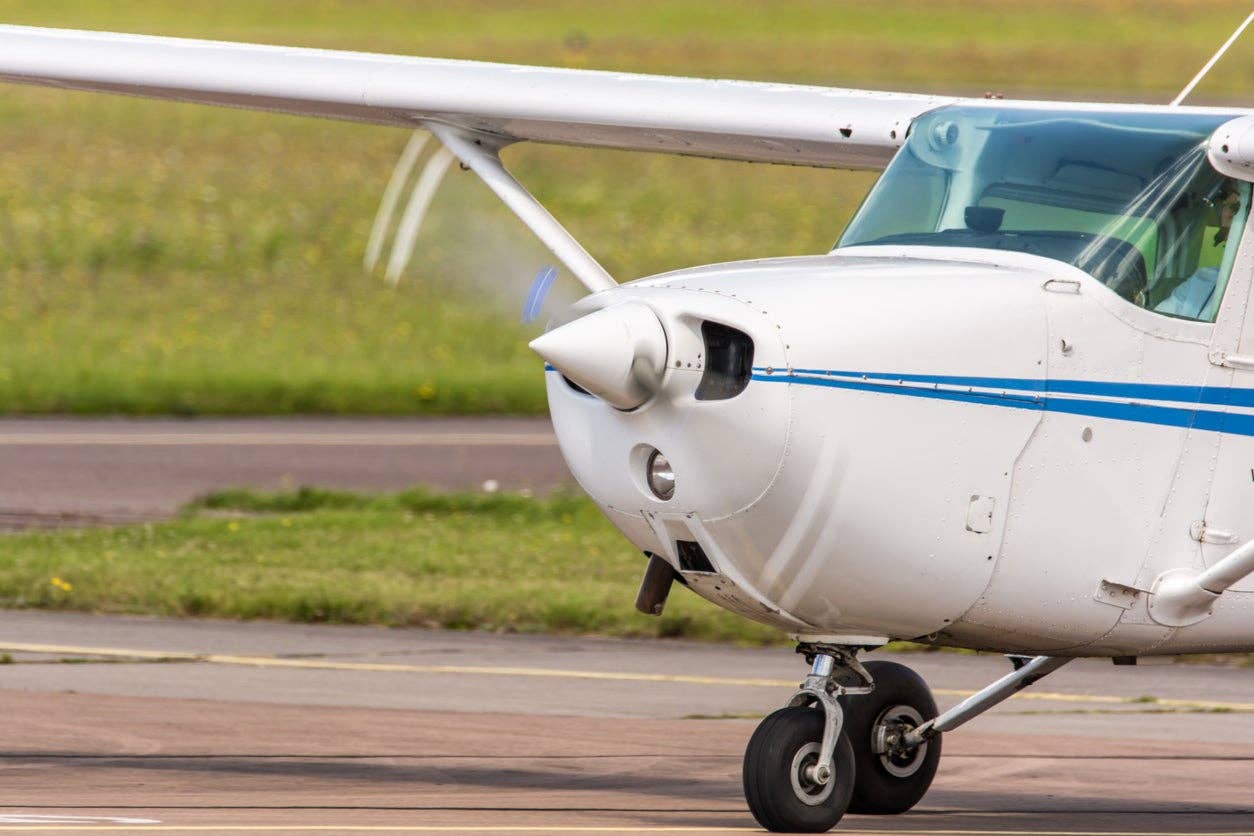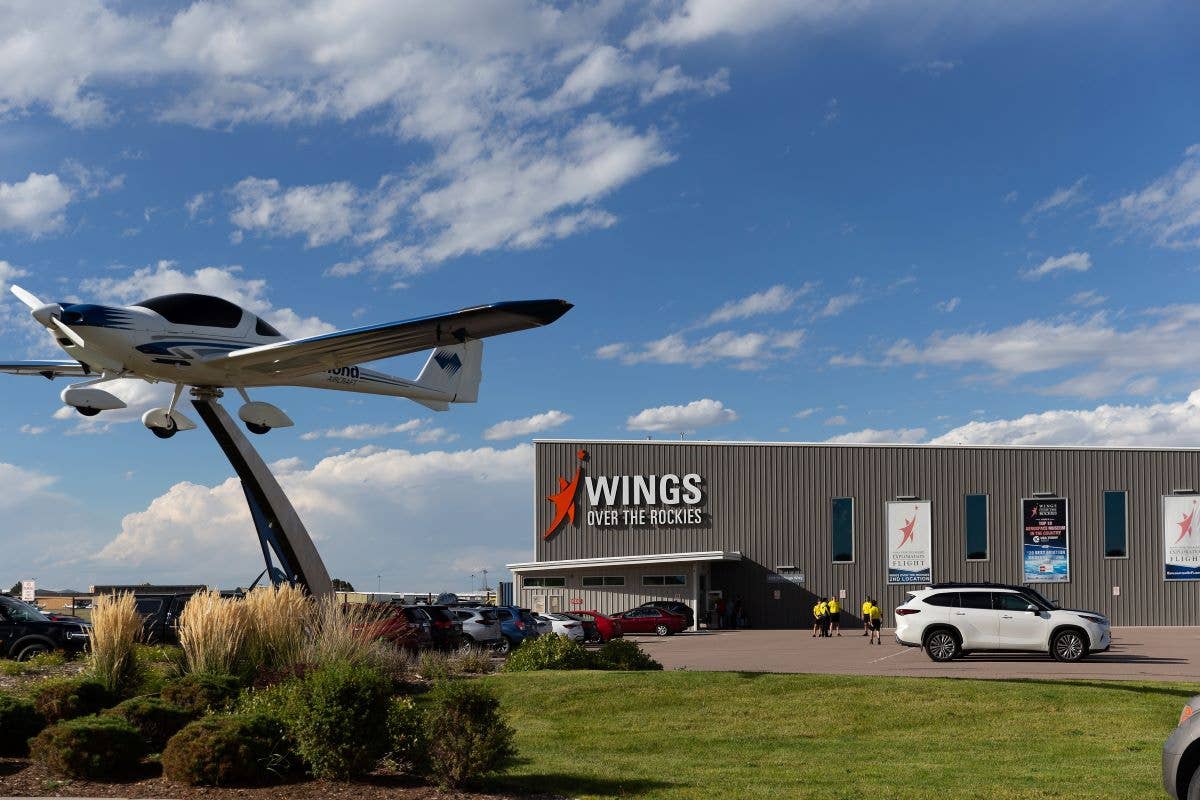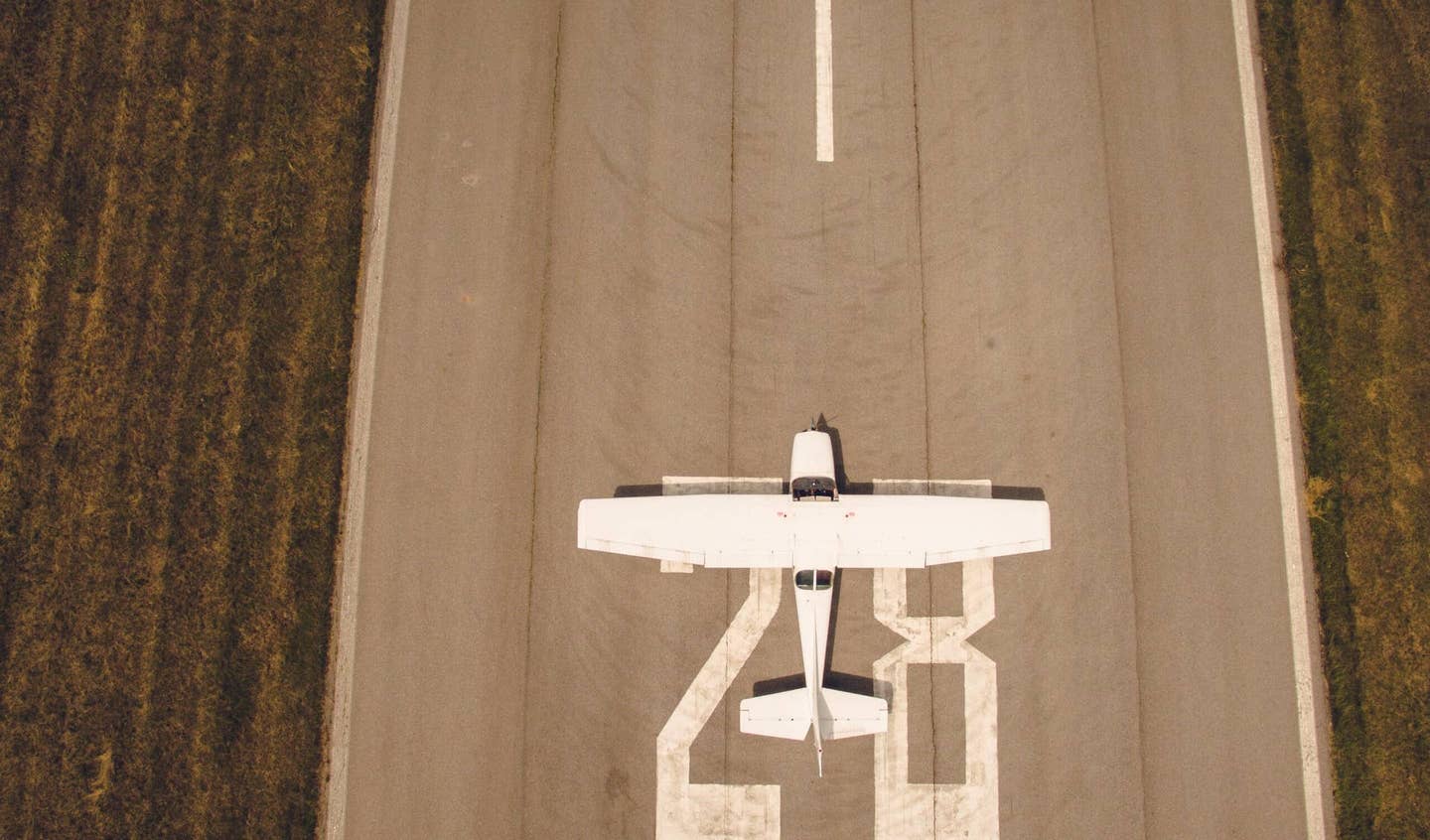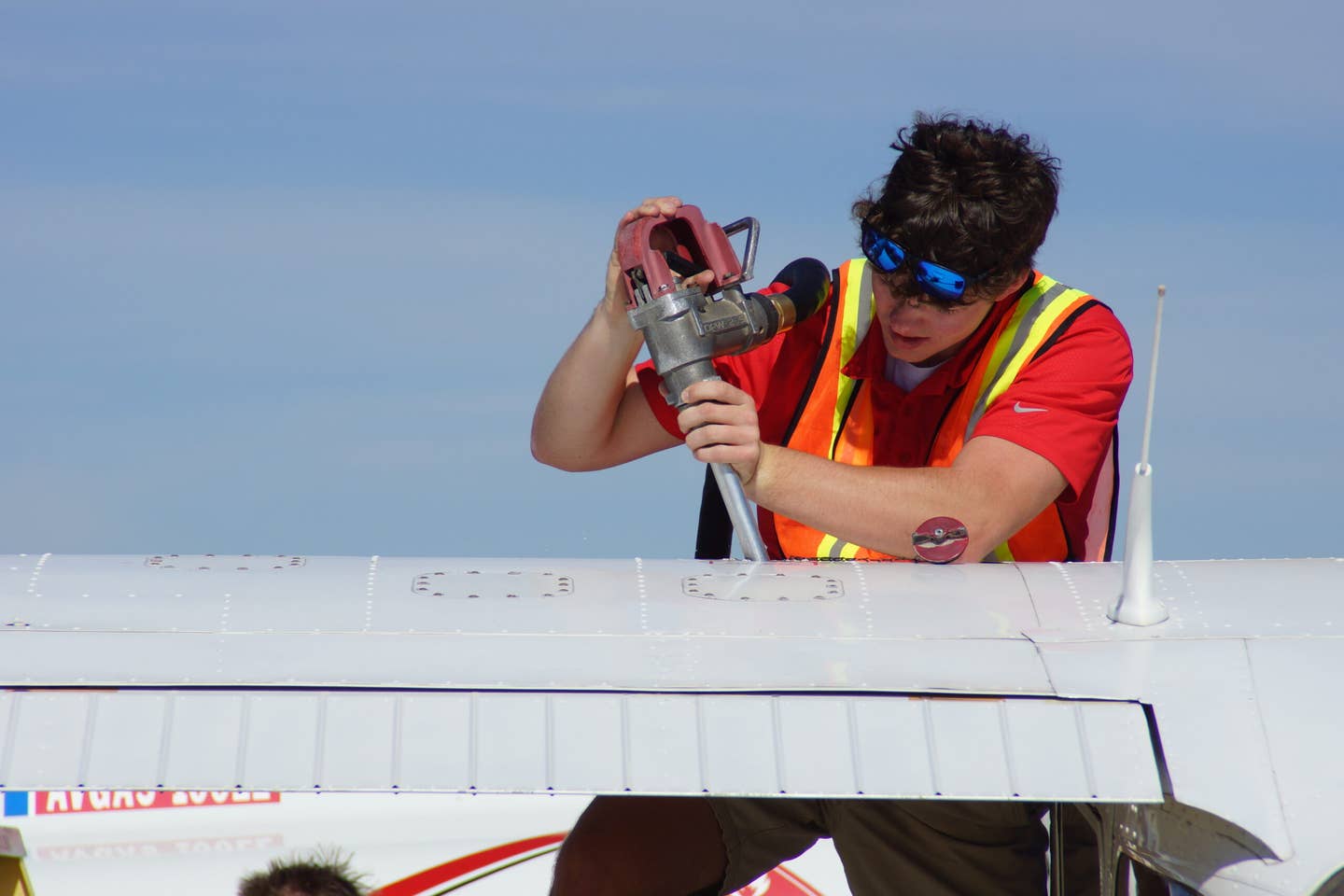Top Habits of Exceptional University Pro Pilot Students
Students from Purdue University demonstrate that it takes more than desire to earn an airline first officer position.
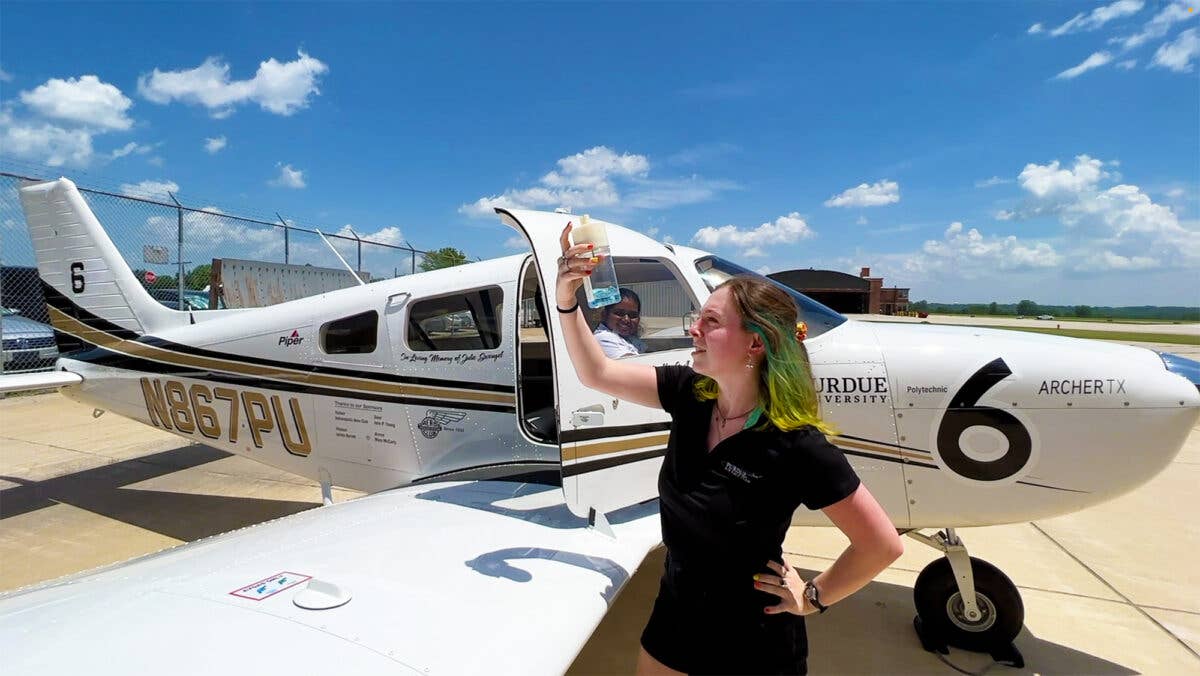
Alex Small, a senior at Purdue University, performs a preflight fuel check for the aircraft her team used for the 2022 Air Race Classic in 2023. [Credit: Purdue/John O’Malley]
At university aviation programs across the U.S., demand is high for coveted slots in the training programs that will launch a student’s quest for a career as a professional pilot. Both regional and major airlines continue to see pilot shortages, and for these students, graduating from a recognized four-year university program is a preferred method to get that airline interview and eventual employment as a first officer.
At Purdue University’s School of Aviation & Transportation Technology (SATT)—where they had 100 flight slots available for the current school year—the program had more than 1,000 applicants. For the coming academic year, the number of applicants has already surpassed 1,400, according to Mike Suckow, Purdue’s associate head for engagement and professor of practice for the SATT. Before the first book is cracked or the propellers start spinning, competition is fierce to just become accepted in the program.
While all of the students accepted into the Purdue program have been vetted and are considered top candidates, among this group are some “exceptional” students who demonstrate a higher level of personal habits that places them in the top tier of their class and positions them well for becoming successful leaders as they continue their professional pilot career with a Part 121 airline, as an air cargo pilot, or with a charter operator.
And while this article will focus on professional pilot students, Purdue’s SATT covers four degree areas: professional flight, aeronautical engineering technology (which encompasses the A&P), aviation management, and unmanned aerial systems. There are 350 flight students flying a fleet consisting of Piper Archers, Arrows, and Seminoles, plus numerous simulators for Boeing 737-800 NG, Airbus A320, Hawker 900XP, and Piper Archer.
The University’s Degree Program
In addition to the general university subjects, the flight-specific progression is to earn the private pilot certificate in the first semester, and instrument rating in the second semester, with the third and fourth semesters consisting of earning the commercial pilot certificate. Students then earn their multiengine rating in either the summer or during a fifth semester.
If students acquire their CFI, they are given the opportunity to instruct and build hours through the next three semesters while they move into their turbine transition phase of their degree using the program’s turbine flight simulators.
“A typical student graduates with their [private, instrument, commercial, multiengine, and CFI] and between 400 to 600 hours,” Suckow said. “and approximately 50 hours of advanced turbine jet simulation. Typical interviews start around the 750-hour mark for major airlines, sooner for regionals.”
‘Exceptional’ Students
It is commonly known that earning a four-year university degree of any kind puts tremendous schedule demands on students. When you add in flight training on top of that, it leaves little wiggle room for error. How do exceptional students manage their life to stay on top of their game?
“Excellent time management skills and focus is the secret sauce for the top performing students,” Suckow explains. “These top students are able to balance their personal lives with their educational goals and needs. This means that when they are flight training, they are 100 percent focused on the lesson and the instruction, and not worrying about the next class assignment. The best of the best can partition the ‘here and now’ from their other obligations and distractions.”
Suckow adds that “it is obvious when a flight student does not show up prepared and expects the instructor to walk them through the lesson. The best students are self-advocates and demonstrate superior self-reflection skills, meaning they have exceptional ownership of their learning.”
Leadership Extends Beyond Flying
The top students in Purdue’s flight program all share similar traits, Suckow said. These include impeccable time management, a strong work ethic, dedicated engagement in learning, maintaining a balanced campus life, the ability to focus, and they are generally leaders in clubs or student organizations.
“These exceptional students carry these traits on into their career,” says Suckow. “Time has shown us how these students quickly move to becoming decision makers. Based on feedback from industry, these are the traits and attributes they are looking for to join their organization in addition—of course—to possessing strong stick and rudder skills."
Suckow adds that leadership is a natural trait among these students, along with a willingness to try new things. “Peer pressure can be a challenge in this age range, and the exceptional performers are able to maintain a balanced legal, moral, and ethical framework and perspective,” he says. “These students manage their distractions and schedule their time when there are limited resources to complete a plan of study, and do not have the expectation that the system will bend to accommodate their loss of focus. Exceptional students do not cancel flight slots, they come in prepared so each lesson is set up for maximum learning and practice.”
All exceptional flight students need to do is show up prepared and perform each task with precision. If they stay at it for the duration of their time at university, graduates will be well-positioned to enjoy a long, lucrative career that could very well eventually culminate with a high-salary captain’s position with a major operator.
Unlike many other types of university degree programs where marginal students can sometimes “fake it ’til they make it,” professional flight students at the collegiate level must continuously demonstrate their competency through FAA check rides and written exams. Success depends on exemplary work both in the classroom and on the flight deck, and slackers need not apply.

Sign-up for newsletters & special offers!
Get the latest FLYING stories & special offers delivered directly to your inbox


